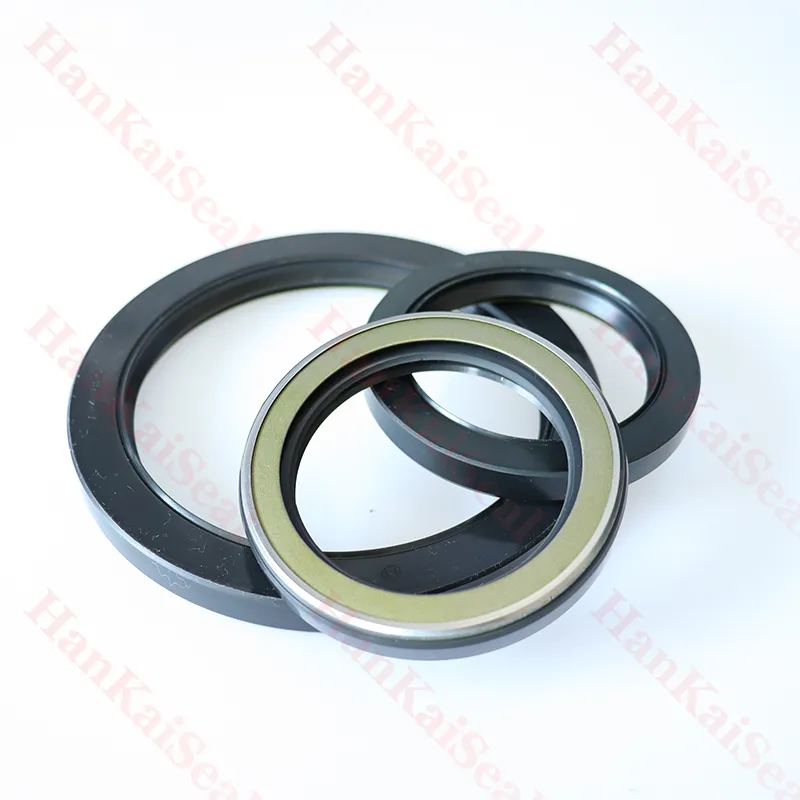ഒക്ട് . 20, 2024 01:14 Back to list
outer hub oil seal
Understanding Outer Hub Oil Seals Their Importance and Functionality
Oil seals, commonly referred to as shaft seals, play a pivotal role in the mechanical integrity of many machines and automotive components. Among these, the outer hub oil seal is particularly significant in ensuring the durability and reliability of a vehicle's wheel assembly. This article delves into the essential functions, benefits, installation details, and maintenance of outer hub oil seals.
What is an Outer Hub Oil Seal?
An outer hub oil seal is typically located on the wheel assembly of vehicles, serving as a barrier between the external environment and the internal mechanisms of the hub. Its primary purpose is to prevent lubricants from leaking out of the hub assembly while simultaneously keeping contaminants, such as dirt, water, and debris, from entering. This sealing function is vital for the proper performance of various components like bearings and gears, which rely on lubrication for smooth operation.
The Importance of Outer Hub Oil Seals
1. Preventing Lubrication Loss The primary role of the outer hub oil seal is to retain the lubricant within the hub assembly. Without an effective seal, oil can leak out, leading to insufficient lubrication. This can result in increased wear and tear of the hub components, causing premature failure.
2. Protecting Against Contaminants The seal acts as a protective barrier against contaminants. Dust, water, and road grime can severely damage internal components if they infiltrate the hub. By keeping these foreign substances out, the oil seal ensures a longer lifespan for your vehicle's axle and bearings.
3. Enhanced Performance Properly functioning outer hub oil seals contribute to the overall performance of the vehicle. By maintaining the integrity of the lubrication system and protecting against contamination, they help ensure that the wheels turn smoothly and efficiently.
4. Cost-Efficiency Investing in high-quality outer hub oil seals can save money in the long run. By preventing lubricant leaks and protecting components from damage, they reduce the need for frequent repairs and replacements, making them a wise investment for vehicle longevity.
Installation Considerations
When installing outer hub oil seals, it is crucial to follow proper procedures to ensure they function as intended. Here are some key steps
outer hub oil seal

1. Clean the Assembly Before installation, clean the hub surface thoroughly to remove any old seal remnants, dirt, or debris. A clean surface is vital for a proper seal.
2. Inspect for Damage Check the hub and bearing surfaces for any signs of wear or damage. If the surfaces are corroded or damaged, it may be necessary to replace them before installing a new seal.
3. Use Proper Tools Employ appropriate tools when installing the oil seal to avoid damaging it. A seal installation tool can help ensure that the seal is driven in evenly and to the correct depth.
4. Lubricate the Seal Before fitting the seal into place, lightly lubricate it with oil or grease. This step helps the seal seat better and reduces the risk of damage during installation.
Maintenance Tips
To ensure the longevity of outer hub oil seals, regular maintenance checks are essential. Here are some tips
1. Regular Inspections Periodically inspect the seals for signs of wear, cracking, or oil leakage. Early detection of issues can prevent more significant problems later.
2. Maintain Lubrication Levels Regularly check and maintain appropriate lubricant levels within the hub assembly. This oversight helps keep the seals effective and prevents undue pressure on them.
3. Environmental Awareness Be mindful of driving conditions. Off-roading or driving in extreme environments can put additional stress on oil seals, necessitating more frequent inspections.
In conclusion, outer hub oil seals are fundamental components that play a crucial role in maintaining the efficiency and durability of a vehicle's wheel assembly. By effectively preventing lubricant leaks and guarding against contaminants, these seals ensure that vehicles perform optimally while minimizing repair and replacement costs. Regular maintenance and proper installation can significantly enhance their functionality, leading to a smoother and more reliable driving experience. Investing in quality oil seals and adhering to sound maintenance practices is vital for any vehicle owner seeking to extend the life of their automobile.
-
The Trans-formative Journey of Wheel Hub Oil Seals
NewsJun.06,2025
-
Graphene-Enhanced Oil Seals: Revolutionizing High-Pressure Oil Sealing
NewsJun.06,2025
-
Future of Hydraulic Sealing: Advanced Intelligent TCN Oil Seals
NewsJun.06,2025
-
Don’t Let a Broken TCV Oil Seal Ruin Your Day
NewsJun.06,2025
-
Bio-Inspired Dust Seals for Better Sealing Performance
NewsJun.06,2025
-
Biodegradable and Sustainable Hydraulic Seal Materials
NewsJun.06,2025
-
Top Oil Seal Solutions for Your Industrial Needs
NewsMay.22,2025
Products categories
















